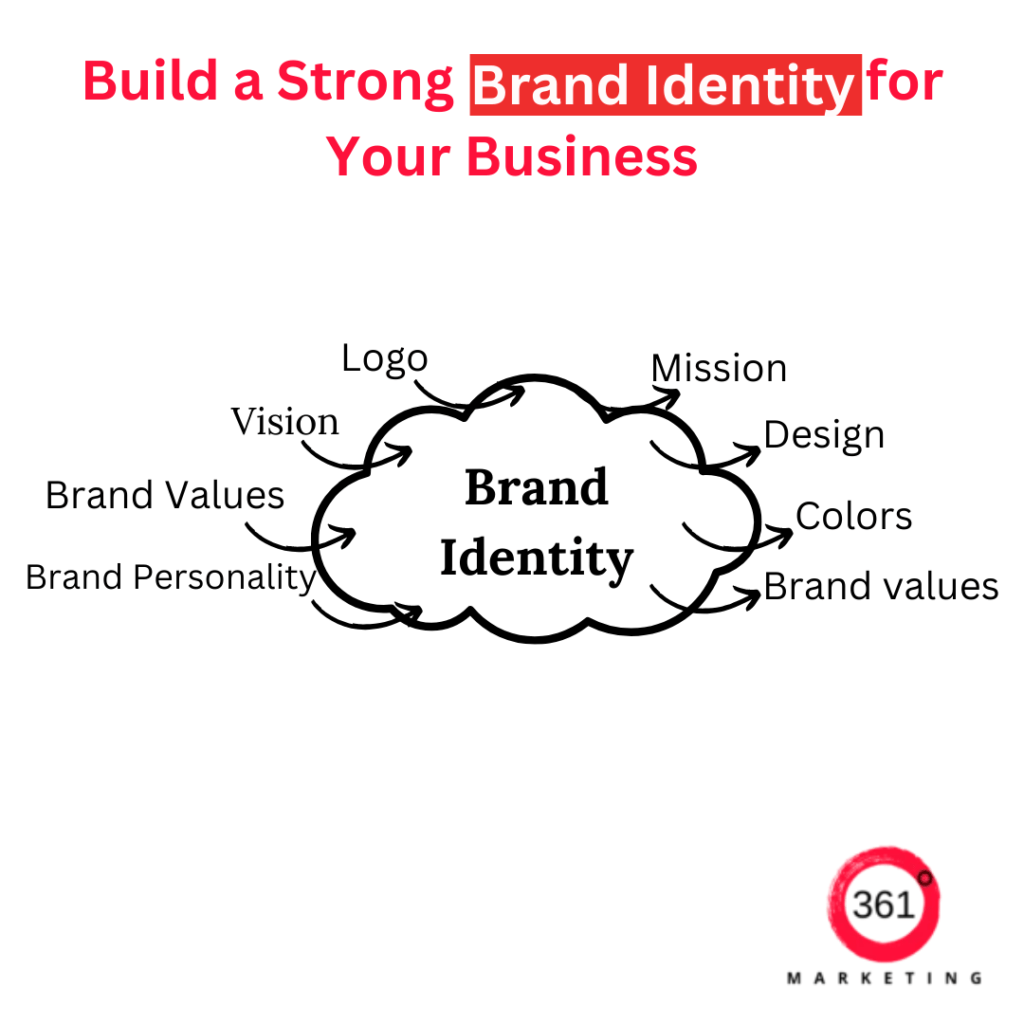How to Build a Strong Brand Identity for Your Business
1. What is Brand Identity?
Brand identity encompasses the visual and tangible elements of a brand, including logo, colors, typography, and messaging. It reflects what the brand stands for and distinguishes it from competitors. Developing a clear identity helps establish consistency, making the brand recognizable to its target audience. Key components include logo design, brand colors, typography, tone of voice, and brand story.
2. Why is Brand Identity Important?
An effective brand identity enhances brand recognition, builds trust, and strengthens customer loyalty. A strong brand helps customers connect with the business emotionally, which improves loyalty and leads to better customer retention. In competitive markets, brand identity can be a significant differentiator that reflects a brand’s personality, culture, and values.

3. How is Brand Identity Different from Brand Image & Branding?
- Brand Identity is the internal design and communication strategy the company uses to represent itself.
- Brand Image is how customers perceive the brand in their minds.
- Branding encompasses the ongoing efforts a business makes to shape its brand, such as campaigns, messaging, and customer service.
4. How to Build a Strong Brand Identity
Building a successful brand identity involves various types of research and analysis to align the brand with its target audience and industry.
- Market Research: Study market trends to understand where your brand fits in. Evaluate market needs, growth areas, and gaps to identify opportunities.
- Competitor Research: Analyze competitors’ brand identities to identify differentiators. Look at their logos, color schemes, taglines, and messaging.
- Product Research: Ensure your product or service aligns with your brand identity. Evaluate the values your product represents and reflect these in your brand.
- Consumer Research: Identify your target audience, their preferences, and behaviors to create a brand identity that resonates with them.
- SWOT Analysis: Conduct a SWOT (Strengths, Weaknesses, Opportunities, Threats) analysis to understand the brand’s current position and potential areas for growth or improvement.
5. What to Avoid When Building a Brand Identity
- Inconsistency: Maintaining a consistent visual identity and voice is crucial.
- Ignoring Audience Preferences: Design with your target audience in mind to ensure that your branding resonates with them.
- Overcomplicating the Design: Keep it simple. Overly complex designs or messaging can confuse the audience.
6. Strong Brand Identity Design Examples with Images
- Nike: Known for its minimalist swoosh logo and bold, motivational messaging, Nike’s brand identity embodies athleticism and inspiration.
- Apple: With its clean and sleek design, Apple’s brand identity focuses on innovation, sophistication, and simplicity.
- Coca-Cola: Coca-Cola’s brand identity is defined by its classic logo and red color, which conveys energy and joy.
Incorporate strong visuals, such as logos, colors, and fonts, that align with your brand’s message and values.
7. Conclusion
Establishing a strong brand identity is essential for differentiating your business in today’s competitive market. Conducting thorough research, maintaining consistency, and incorporating feedback can ensure your brand resonates with your audience. To develop a memorable brand identity that aligns with business goals and customer preferences, consider expert help. Visit 361 Degrees Marketing for guidance on building a robust brand identity tailored to your unique needs.
Start Your
Marketing
Journey with Us
Marketing
Journey with Us

Start Your
Marketing
Journey with Us
Marketing
Journey with Us- Written by: 361 Degrees Marketing Team
- Posted on: November 15, 2024
- Tags: 361degreesmarketing, brand story

